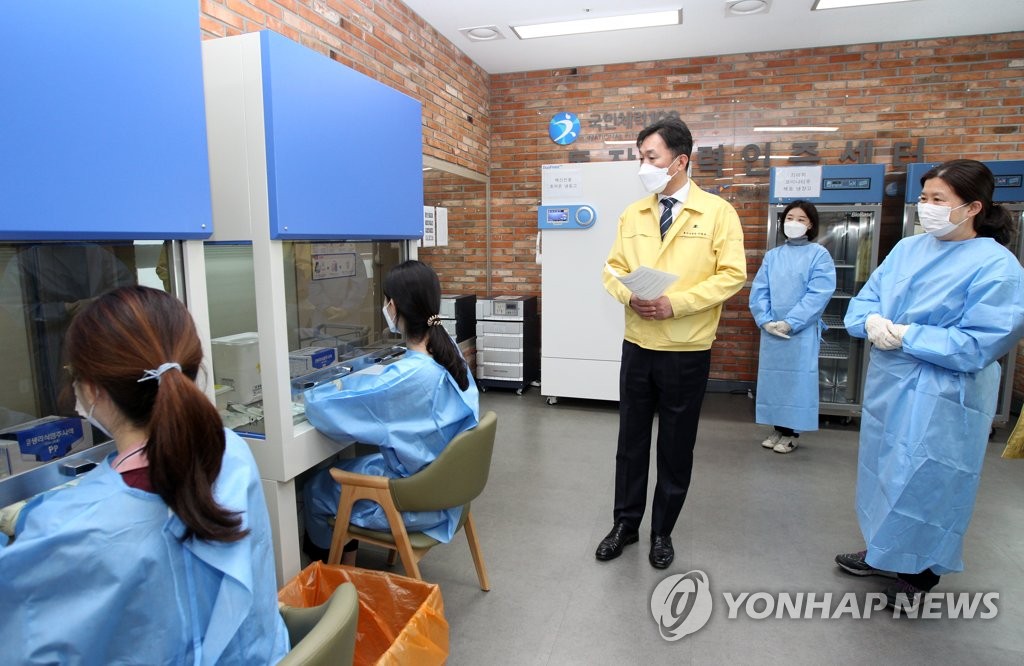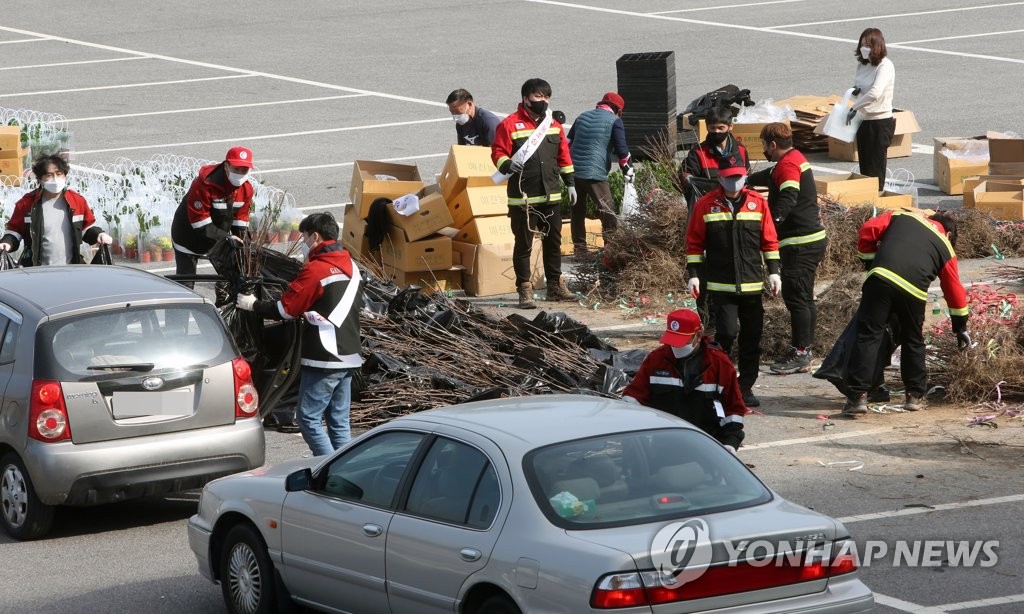- California Assembly OKs highest minimum wage in nation
- S. Korea unveils first graphic cigarette warnings
- US joins with South Korea, Japan in bid to deter North Korea
- LPGA golfer Chun In-gee finally back in action
- S. Korea won’t be top seed in final World Cup qualification round
- US men’s soccer misses 2nd straight Olympics
- US back on track in qualifying with 4-0 win over Guatemala
- High-intensity workout injuries spawn cottage industry
- CDC expands range of Zika mosquitoes into parts of Northeast
- Who knew? ‘The Walking Dead’ is helping families connect
(3rd LD) New infections nearing 500, another uptick looming amid extended curbs
South Korea’s daily new coronavirus cases stayed above 400 for the third straight day Friday, prompting health authorities to extend current distancing rules by another two weeks amid looming concerns over a spike in new infections.
Health authorities are concerned about another uptick during spring time, with untraceable cases rising sharply.
The country reported 494 more COVID-19 cases, including 471 local infections, raising the total caseload to 100,276, according to the Korea Disease Control and Prevention Agency (KDCA).
The country added seven more deaths from COVID-19, increasing the total to 1,716. The fatality rate was 1.70 percent, the KDCA said.
Daily infections rebounded to 428 Wednesday and 430 Thursday after falling to 346 on Tuesday. The daily caseload had stayed above 400 for six days in a row through Monday.
As of 6 p.m. on Friday, the country reported 381 new cases, down one from the same time on Thursday. Of the total, 249 cases, or 65.4 percent, were reported in the greater Seoul area, including 118 in Gyeonggi Province and 107 in the capital.



This photo taken on March 25, 2021, shows a government official looking around a coronavirus vaccine center in Sadang, southern Seoul, ahead of planned vaccine inoculations on April 1. (Yonhap)
To curb the pandemic in the greater Seoul area, health authorities decided to extend the current distancing rules, the third highest in the five-tier virus restrictions, for another two weeks until April 11. They had been set to expire on March 28.
The greater Seoul area that includes Gyeonggi Province and Incheon is home to roughly half of the country’s 52 million population.
The wider Seoul area has been under the Level 2 social distancing measures since February, which center around banning gatherings of five or more people. The measures include attendance caps at schools, religious activities and sports events.
Meanwhile, the country’s COVID-19 vaccine rollout is expected to gather pace as AstraZeneca COVID-19 shots for elderly citizens aged 65 and older started Tuesday.
Health authorities assessed there is no evidence suggesting a correlation between the vaccines and blood clots found in some recipients.
Pfizer vaccines for some 250,000 people arrived here Wednesday for the inoculation of people aged 75 or older. The vaccines are part of Pfizer vaccines for 13 million people, which will be provided under a deal with the U.S. pharmaceutical firm.
Under the country’s vaccination program that started Feb. 26, the country seeks to vaccinate 12 million people by June. Foreigners also will be inoculated under the program.
The country aims to achieve herd immunity by November.
A total of 767,451 people, including 32,456 the previous day, had been given COVID-19 vaccine shots as of Friday. This accounts for around 1.5 percent of the country’s population.
AstraZeneca’s vaccine accounted for 707,481, while Pfizer’s took up 59,970.
A total of 10,113 cases of side effects after vaccinations have been reported, but most of them have turned out to be mild symptoms, such as headaches, fever and nausea.
Seventeen deaths after vaccinations have been reported so far, the health agency said.
Of the new locally transmitted cases, 121 came from Seoul and 187 were reported from Gyeonggi Province that surrounds the capital. Incheon, 40 kilometers west of Seoul, reported 28 more cases.
Cases tied to a sauna in Jinju, South Gyeongsang Province, rose seven to 237, with cases involving an entertainment facility in Geoje, South Geyongsang Province, up 10 at 172 and cases related to a childcare center in Osan, Gyeonggi Province, up three at 19.
The number of imported cases came to 23, up from 11 the previous day. Cases from Asian countries, except for China, stood at 13, with cases from the United States and Europe at eight and two, respectively.
The number of seriously or critically ill COVID-19 patients was 111, unchanged from the previous day.
The total number of people released from quarantine after making full recoveries was 92,630, up 562 from a day earlier.
South Korea has carried out 7,529,403 COVID-19 tests, including 43,544 a day earlier.











